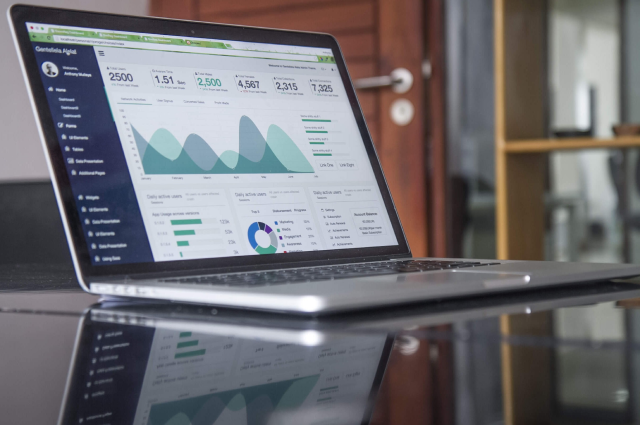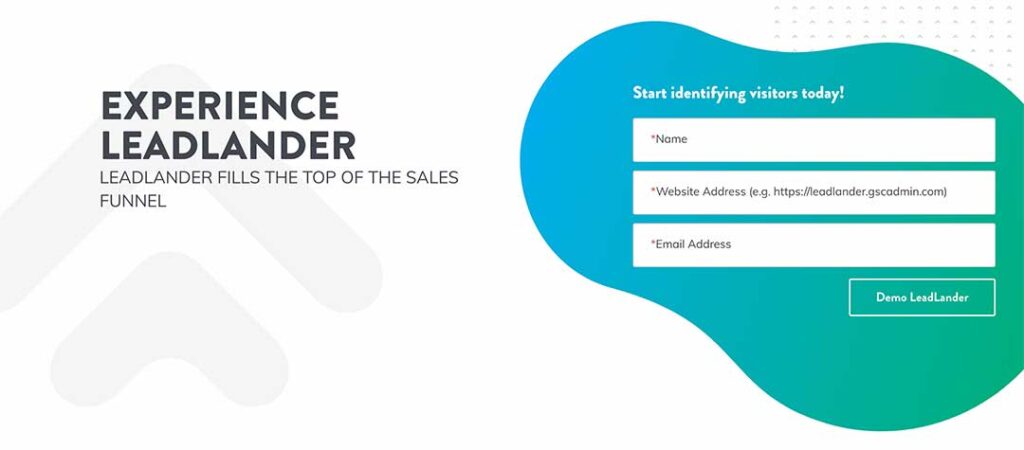Data plays an essential role in helping companies monitor set KPI’s and achieve long-term goals. It reveals what works well and which practices need improvement. One area where data can make a huge difference is in the business-to-business sales process. There are several metrics you can use to improve your sales numbers, but perhaps none is more important than your conversion rate. Keep reading to learn why conversion rates matter, and how to calculate your B2B website visits conversion rate.
First: What Are Conversion Rates?
Conversion rates are essentially a measurement of the percentage of users who completed a certain action. For example, in business-to-business sales, your conversion rate would be the total number of prospects you convert into paying customers.
Conversion rates in marketing are quite similar. They’re used to measure things like the number of web visitors that gave you their information or the number of people who saw your ad and clicked on it instead of ignoring it.
Conversion rates for B2B website visits
Conversion rates can be especially important for B2B websites. They’re a great way to measure the percentage of your web visitors that you’re able to turn into actionable leads. B2B companies can also use conversion rates to figure out which parts of their website perform the best.
For example, many B2B websites include several different calls to action throughout their site. If you start tracking the conversion rates of each of these CTAs, you’ll be able to figure out which one is getting the most users into your sales funnel.
Armed with that information, you can make changes to your website that replace weaknesses with known strengths. Ultimately, this could lead to an increase in the number of leads your sales staff has to pursue.
How To Calculate Your B2B Website Conversion Rate
First thing’s first: you need to know how to calculate your conversion rate before you can start taking advantage of everything the metric has to offer. The formula is very simple.
Total number of leads generated by your website / total number of unique website visitors = B2B website conversion rate
This formula will give you the overall conversion rate for your site. But you can also tweak the formula to find the conversion rate of specific pages on your site by only using the data from that page.
For instance, you might want to figure out how well a Services or FAQ page is performing. You could do that by dividing the total number of leads you got from that page by the total number of unique users that visited the page.

B2B Conversion Rates Vary By Industry
Once you’ve figured out your conversion rate, you’ll want to determine whether it’s good or if it needs improvement. One way to do that is by comparing your rate to the average for the industry. If you’re doing better than your industry’s average, then chances are you’re already on the right track.
It’s important to keep in mind that benchmark rates can vary significantly from industry to industry. Here’s a look at the average conversion rates for some of the most popular B2B sectors.
- Professional and financial services, 10%
- Media and publishing, 10%
- Education and healthcare, 8%
- Software and SAAS, 7%
- Technology, 5%
- Travel and hospitality, 4%
- Retail and eCommerce, 3%
- Non-profit, 2%
The overall average conversion rate for B2B websites
The numbers shown above are actually on the higher-end for B2B websites. Across all industries, the average B2B website conversion rate is just 2.55%. That means that out of every 100 people who visit the average B2B site, less than 97 end up converting into actionable leads.
Steps You Can Take To Improve Your Conversion Rate
If your conversion rate isn’t where you want it, know there are several steps you can take to immediately improve it. Here’s a look at some of the best strategies for this.
Improve your website’s technical performance
The technical performance of your website is usually not the first thing that a company thinks about when trying to improve its lead generation capabilities. But it really should be. If your website is tough to navigate and takes forever to load, it could be costing you a huge number of leads.
Google found that 53% of mobile website visitors will leave if the webpage doesn’t finish loading within three seconds. About 40% of traditional web users will do the same. That means you could have the best content in the world and still underperform severely if your website isn’t up to snuff.
Take some time to analyze how your website performs across various internet browsers and devices. You should make sure that your pages load quickly, no matter how your web visitors choose to access them. This can be a good first step because it will allow you to maximize the content you already have.
Stop asking for too much information from your web visitors
Your company wants as much information about its web visitors as it can get its hands on. But it’s rarely a good idea to ask for all of it upfront.
Most people who visit your website will be in the early stages of the buying process. They don’t want to give you everything but their social security number just to access content they care about. If you make this a requirement, the user will be much more likely to leave your site and find the information they need elsewhere.
That’s why it’s a good idea to begin by only asking for an email address. Create a low barrier to entry for your premium content so that you can get more people into the very top of your sales funnel. Once you’ve done that, you can gradually begin asking the person for more information over time until you have everything you need to complete the sales process successfully.
Personalize your B2B sales process
If your conversion rate isn’t where it should be, another way to improve it is by personalizing your marketing efforts. Doing so will allow you to serve the right content to every prospect that visits your site and will significantly increase the likelihood that the visitor sticks around to read what you have to say.
This is backed by statistical evidence, too. Personalized calls to action perform 42% better than boilerplate ones. So consider investing in this capability if you haven’t already. It could be just what you need to start getting more out of your content.

Bonus Strategies For Boosting Your Conversion Rate
There are many strategies you can try to improve your B2B website’s conversion rate. Here are a few additional ones that will help you get to your desired number.
Lead your visitors where you want them to go. Too many websites underperform because they fail to lay out a path for their visitors to follow. You want to anticipate the types of content that your buyers will want and use that knowledge to create an easy path down your lead funnel.
To do this successfully, you’ll want to remove as many sources of friction as possible. You should also include clear calls to action often so that taking the next step toward your end goal feels natural for a web visitor.
Target more specific buyer groups. Even if your B2B company has a broad general audience, you should aim to create targeted content that appeals to your most valuable buyer groups. Creating these types of pages will help your website stand apart from others that talk about the same things you do in more general ways. It will make your web visitors feel like they’re in the perfect place to satisfy their needs.
Use LeadLander To Improve Your Conversion Rate And B2B Sales
As you continue researching ways to improve your conversion rate, one theme that you’ll see repeated often is data. You need high-quality web data to calculate your conversion rates for various pages and to serve personalized calls to action to different groups of buyers.
That’s why investing in a web analytics tool like LeadLander can be so beneficial to your efforts. Our platform gives you all the information you need to know about your website visitors. LeadLander will also help you find and track undiscovered leads even when they don’t fill out any information on your website.
With features like these, LeadLander can form the backbone of your work towards a better conversion rate. But don’t just take our word for it. You can try LeadLander yourself for free by signing up for our 14-day trial. No credit card is required, and you’ll be free to cancel at any time.

